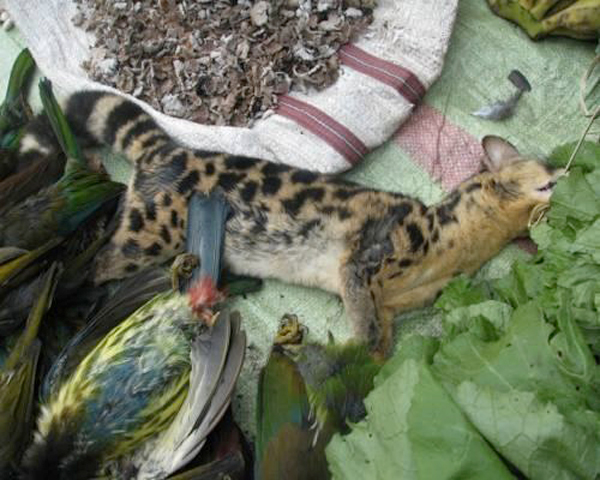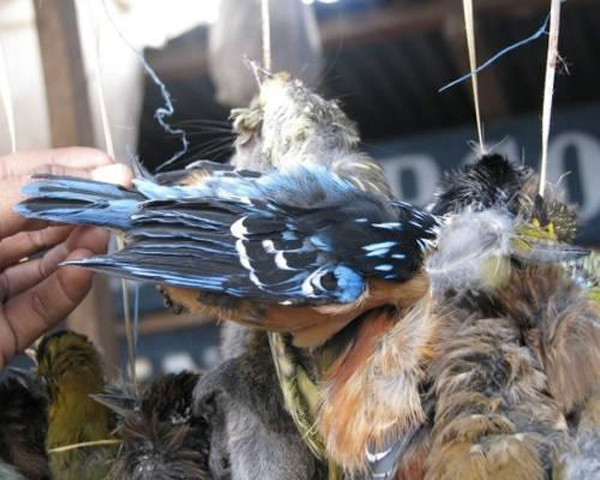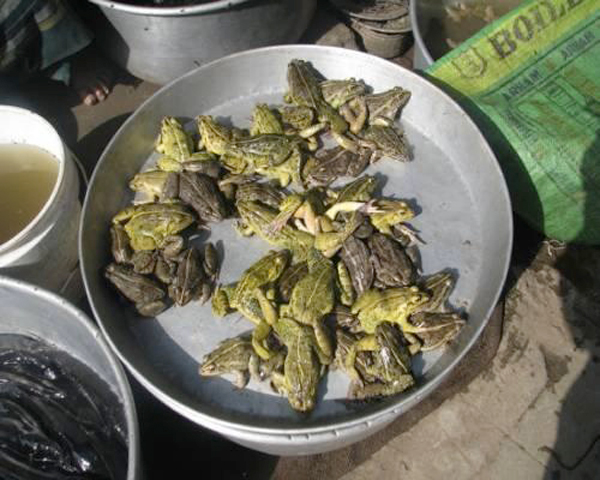By Aruni Kashyap
IN THE SHADOW OF THE GUN: In this 2007 file photo, children on their way
to school pass security personnel in Borka village in Kamrup district,
one of the areas worst affected by insurgency. Photo: Ritu Raj Konwar
Extra-judicial killings by security forces during the separatist
insurgency continue to be a traumatic chapter for the people of the
State
Several people have asked me why I chose to write a novel set against
the backdrop of the Assamese insurgency. The truth is that I had to deal
with the subject because my generation has grown up under the shadow of
this violent conflict. It is impossible not to tell stories set amid
the conflict because almost all my memories of childhood and adolescence
have been shaped by it. In fact, when I was in my teens one of the most
shameful episodes of human rights violation under Indian democracy was
unfolding.
Throughout high school, I read reports in Assamese papers about the
discovery of mutilated bodies or the massacre of entire families (such
as poet and former insurgent Megan Kachari’s family) and heard stories
from people in our ancestral village. My generation grew up amid this
normalised sense of fear. Since it seemed so regular, and hence
“normal”, a lot of us didn’t pay much attention to it until it touched
us in some way. That happened to me in 2001, when a person called
Jyotish Sarma was killed not very far from my house. The next morning, I
was waiting for my school bus on Zoo Road Tiniali, Guwahati, when a few
young men riding a Bajaj scooter stopped to tell me that I should
return home, “because soon there will be trouble”.
I had a test in school that day. I couldn’t have skipped it. That
afternoon, when I walked down from the bus stop to my house about an
hour later than usual, my mother hugged me and cried because she was so
worried. I told her about the demonstrations that had blocked the
streets of Guwahati, delaying my school bus. Later, I learnt, the people
had taken to the streets to protest against the government, tired of
the mysterious murders.
Blood-stained stories
From that day onwards, I started asking my parents questions and reading
the local papers keenly. All the stories I read were stained with
blood. I understood that our government was systematically and
extra-judicially killing innocent civilians, people who were considered
sympathisers of the separatist movement led by the United Liberation
Front of Asom (ULFA) who wanted a sovereign and free country of Assam.
People say many who were killed and disappeared had nothing to do with
the insurgency. They were either close friends or relatives of the
rebels.
By then, a large number of rebels had surrendered. But a lot of them
hadn’t. The government couldn’t lure them with its lucrative surrender
schemes. Frustrated, it wanted to poke on raw wounds; touch where it
hurt the most. ‘If you don’t surrender, we will kill your dearest
sister, mother, father, brother, best friend, brother-in-law and we
don’t care if they support the separatist movement or not’ — that was
the message behind the killings. Masked gunmen visited the homes of
these people at night to pick them up. Their bullet-ridden bodies were
found in random places. Sometimes, they were never found. In the small
rivers of Assam, in streams, in forests, mutilated body parts were
discovered that were probably those of the victims.
The Secret Killings of Assam remain one of the most shameful,
under-reported chapters of Indian democracy. Despite such widespread
human rights violations, very little of it was covered by the Indian
media and almost none by the international press. It is reminiscent of
the Dirty War in Argentina: a period of state terrorism during the 1970s
when approximately 22,000 people who opposed the military dictatorship
were killed or disappeared.
Even now, the Secret Killings of Assam resurface only during the
elections when contesting parties sling mud at each other. The media
tell us that the K.N. Saikia Enquiry Commission’s report clearly
indicates the complicity of the Indian government and the army in
orchestrating these killings.
We still don’t know what the exact truth is. We would probably never
have a clear picture and perpetrators would be never brought to book.
All that remain are relatives of those victims. For the people who found
bullet-ridden bodies, or heads or legs or fingers, of their family
members, at least there is closure. But for the ones whose sons and
sisters never returned home, it is a flame thriving on their blood,
tears and sweat. In 2012, a family conducted the last rites of their son
seeking such a closure — they constructed an effigy, dressed and
cremated “him”. A local TV channel covered the news. I saw the mother
howling and wailing over the effigy, hugging it, refusing to let it be
cremated as if it was her son’s real body. Has closure really come for
that mother?
Writing on fear
My generation grew up surrounded by this violence, just like the
protagonist of my novel, Pablo, an adolescent boy growing up in this
period — I heard his voice clearly in my mind. I also wrote this book
because I was interested in the different ways in which fear percolates
into the minds of people living under terror and what kind of choices
they make due to this fear; because I wanted to celebrate the lives of
people in rural Assam who have borne the brunt of Assam’s insurgency;
because I wanted to suggest that life goes on despite everything;
because I wanted to think deeply about the generation in Assam born
around and after 1979 — a crucial year for Assam because it was the year
ULFA was formed, the year the Assam Movement started; events that
changed things forever for the worse.
Anger and the book
Anger was an almost insurmountable obstacle while writing the book.
Anger at how human rights are recklessly violated in my home State by
the security forces and the insurgents. Often, while writing, I would
end up crying without being aware of it. But the novels I have loved and
admired are about gross social injustice and at the same time, deeply
political, subversive, tender and hopeful; the conflicts of the human
heart are their central preoccupation. I was very worried that I would
end up writing a book that I wouldn’t like reading and that is why I had
to tone down the bitterness and anger while rewriting it. I wanted it
to be an optimistic book that would look beyond the ugliness of
violence. I didn’t want to write a bitter, angry story that would thrive
on embracing victimhood because I do not believe that the perennially
resilient people of Assam are victims; we are, rather winners,
survivors.
Also, too much anger directed at the government would have placed Delhi
(the seat of Indian government) centrally in my novel. I wanted to avoid
that — because Assamese life has more meaning than the violence, than
its relationship with Delhi. Assam may not be sovereign politically, or
economically, but the Assamese imagination has to remain sovereign.
(Aruni Kashyap’s novel The House With a Thousand Stories is published by Viking/Penguin.)

















